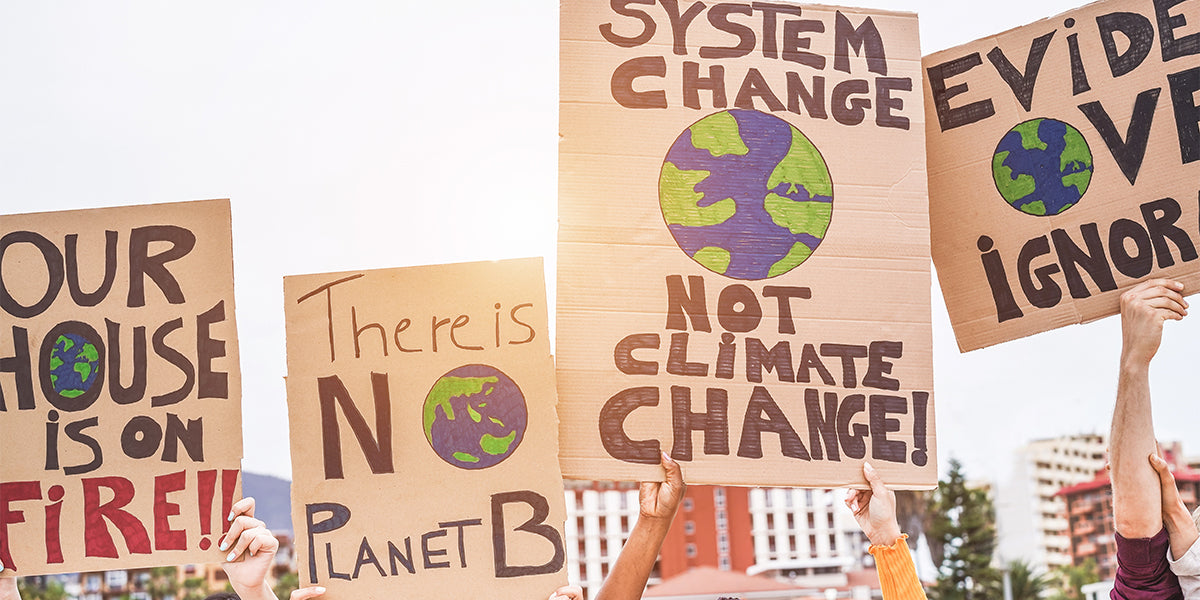
How Is Climate Change Driving Increased Rates of Skin Cancer?
Written by Alexandra Merlino
As global skin cancer rates continue climbing, research confirms that climate change serves as a significant contributing factor to this alarming health trend.
The Reality of Climate Change's Visible and Hidden Impacts
Climate change manifests everywhere around us. Here in New Mexico, extreme drought conditions create visible impacts through dry rivers, stressed wildlife, and poor air quality from fires raging across the West. However, the changes we cannot see may prove equally dangerous.
Global skin cancer rates increase 4-5% annually. Since becoming a skin cancer statistic myself, I've researched this troubling connection between our changing climate and rising cancer rates.
Alarming Skin Cancer Statistics
The United States reports more than 5 million skin cancer cases annually. The World Health Organization predicts this number will increase by 10% by 2050, representing a significant public health challenge.
Over the past decade, invasive melanoma diagnoses, the most serious skin cancer form, increased by 44%. This trend continues with an estimated 5.8% melanoma incidence increase in 2021 alone. Understanding why this happens requires examining the relationship between UV radiation and our changing atmosphere.
UV Radiation: The Primary Culprit
Sunlight provides the primary source of UV radiation reaching Earth's surface. UV radiation functions as a complete carcinogen, meaning it can independently cause cancer without additional factors.
In 1985, scientists discovered large holes in the stratospheric ozone layer. These ozone gaps allowed increased UV radiation to reach the southern hemisphere, creating measurable health impacts.
Two types of UV rays reach Earth's surface with different characteristics and dangers: UVA rays comprise 90-95% of solar radiation hitting Earth's surface. These rays penetrate deeper into the skin, causing cellular aging and indirect DNA damage. UVA rays primarily link to long-term skin damage like wrinkles, but also contribute to certain skin cancers. They create immediate tanning effects and sometimes sunburn while penetrating windows and clouds. UVB rays represent 5-10% of solar radiation reaching Earth's surface after partial ozone layer absorption. UVB rays contact the skin's outer layer, directly damaging cellular DNA and causing most sunburns. These rays are responsible for the majority of skin cancers. The upper atmosphere ozone layers filter UV radiation. Ozone damage or loss allows more radiation to reach Earth's surface, directly increasing skin cancer rates.
Three Ways Climate Change Increases Skin Cancer Risk
Climate change contributes to rising skin cancer rates through three distinct mechanisms: Stratospheric Ozone Depletion: In 2017, Harvard University atmospheric chemist James Anderson and colleagues discovered that planetary warming intensifies summer storms, making them powerful enough to send moisture into the stratosphere. This moisture triggers ozone-depleting chemical reactions, reducing ozone density at mid-latitudes. Global warming feeds warmth and moisture into the atmosphere, fueling instability in the stratospheric ozone layer.

Heat from Global Warming:
Rising temperatures directly impact human behavior. As temperatures rise, people spend more time outdoors, wear fewer clothes, and experience increased exposure to UV radiation. Heat also affects carcinogenesis processes. Research demonstrates that UV radiation becomes more effective at creating tumors at higher temperatures, while nonmelanoma skin cancer risk increases for every Celsius degree of temperature rise.
Air Pollution:
Beyond causing respiratory issues, air pollution also has implications for skin cancer. Particulate matter—a vital air quality indicator—not only penetrates lungs but also enters systemic circulation, crosses the blood-brain barrier, and can directly penetrate the epidermis.
Protecting Yourself in Our Changing Climate
With greater percentages of UVB rays hitting Earth's surface, adopting aggressive sun care strategies becomes more crucial than ever. The American Cancer Society recommends avoiding sun exposure, especially between 10 a.m. and 4 p.m. For outdoor enthusiasts, integrating these protective measures helps shield against dangerous solar radiation:
Cover up with protective clothing, including SPF-rated garments, hats, and sunglasses. Integrate broad-spectrum mineral sunscreen with SPF 15 or higher into daily skincare routines. For extended outdoor activities, use a broad-spectrum mineral sunscreen with an SPF of 30 or higher, reapplying every two hours or after swimming or sweating. Stay in shade whenever possible.
More ultraviolet radiation reaches Earth's surface due to the damaging impact of climate change on our fragile ozone layer. While this creates challenges for outdoor enthusiasts, strategic sun exposure approaches can provide adequate protection. Your safety depends on understanding these connections and taking proactive protective measures.


